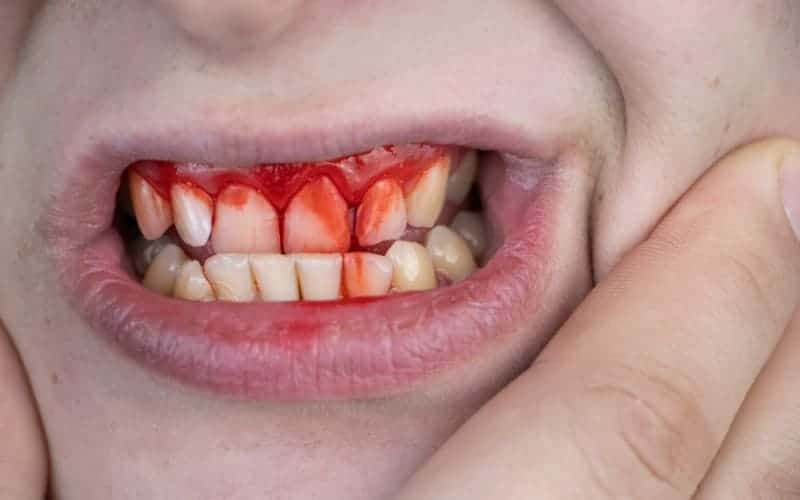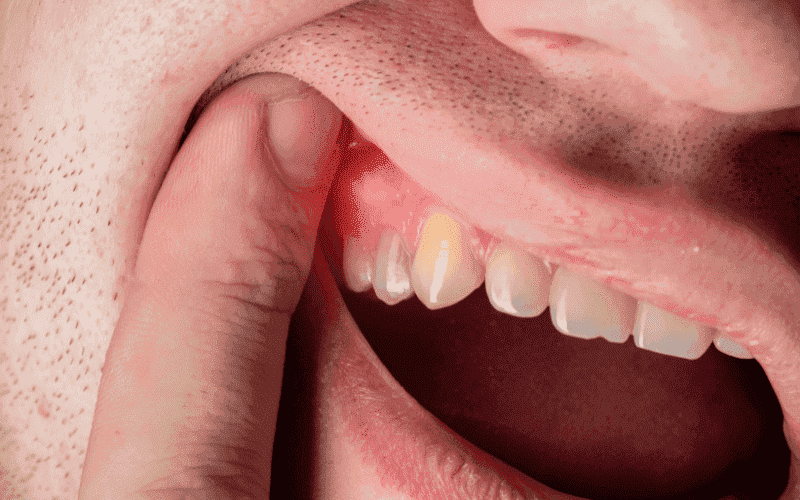
Bleeding gums are a common issue, often noticed when brushing or flossing. While it might be tempting to dismiss this symptom, it can signal underlying oral health problems that shouldn’t be ignored. Gum therapy, also known as periodontal therapy, is a specialized treatment aimed for bleeding gums. This comprehensive approach not only alleviates symptoms like bleeding gums but also targets the root causes, ensuring a healthier mouth and preventing more serious conditions.
The Importance of Healthy Gums
Gums play a crucial role in maintaining overall oral health. They act as a protective barrier, shielding the roots of teeth and the underlying bone from harmful bacteria. Healthy gums support teeth firmly, prevent sensitivity, and contribute to a stable foundation for chewing and speaking.
Neglecting gum health can lead to serious consequences. Initially, it may cause gingivitis, characterized by red, swollen, and bleeding gums. If left untreated, this can progress to periodontitis, a more severe form of gum disease that can cause tooth loss and damage to the jawbone. Furthermore, poor gum health has been linked to systemic conditions such as heart disease, diabetes, and respiratory issues. Therefore, maintaining healthy gums is essential for both oral and overall well-being.
Causes of Bleeding Gums
1. Poor Oral Hygiene: Inadequate brushing and flossing can lead to the buildup of plaque along the gumline, causing irritation and inflammation known as gingivitis, which results in bleeding gums.
2. Gum Disease: Progressive stages of gum disease, like periodontitis, cause the gums to pull away from the teeth, forming pockets that become infected and bleed easily.
3. Improper Brushing or Flossing Techniques: Using a hard-bristled toothbrush or aggressive flossing can damage the delicate gum tissue, leading to bleeding.
4. Nutritional Deficiencies: A lack of essential nutrients, particularly vitamin C and vitamin K, can weaken gums and lead to increased bleeding.
5. Medical Conditions and Medications: Certain medical conditions such as diabetes, blood disorders, or hormonal changes during pregnancy, as well as medications like blood thinners, can increase the likelihood of bleeding gums.
Understanding Gum Therapy
1. Scaling: This initial stage involves the removal of plaque and tartar deposits from the surfaces of the teeth, both above and below the gumline. Specialized instruments are used to scrape away the buildup, reducing bacteria and inflammation.
2. Root Planing: Root planing focuses on smoothing the rough surfaces of the tooth roots to remove bacterial toxins and promote the reattachment of the gums to the teeth. This helps to eliminate pockets where bacteria thrive and prevents further progression of gum disease.
3. Gum Pocket Reduction Surgery: In cases of advanced gum disease where pockets have formed around the teeth, surgical intervention may be necessary. This procedure involves accessing the roots of the teeth to remove diseased tissue and reduce pocket depths, facilitating better oral hygiene and preventing further damage.
4. Guided Tissue Regeneration: In advanced cases where there has been a significant loss of gum and bone tissue, guided tissue regeneration techniques may be employed. This involves placing biocompatible membranes or tissue grafts to encourage the regeneration of lost tissue and support the reattachment of the gums to the teeth.
5. Gum Grafting: In situations where gum recession has occurred, exposing the roots of the teeth, gum grafting may be recommended. This procedure involves taking tissue from another area of the mouth or using synthetic materials to cover exposed roots and restore gum tissue volume.
6. Laser Therapy: Laser technology is increasingly being used in gum therapy to remove diseased tissue, disinfect pockets, and promote healing. Laser therapy is minimally invasive and can result in faster recovery times compared to traditional surgical methods.
Effectiveness of Gum Therapy for Bleeding Gums
Gum therapy stands as a highly effective solution for treating bleeding gums, particularly in the early stages such as gingivitis. Here’s why:
1. Early Intervention: In cases of gingivitis, where bleeding gums are often the first sign of gum disease, gum therapy can effectively eliminate the underlying cause – plaque buildup – through professional cleaning (scaling) and root planing. By addressing the issue promptly, gum therapy can halt the progression of gingivitis and prevent it from evolving into more severe forms of gum disease.
2. Restoration of Gum Health: Scaling and root planing, the primary components of gum therapy, remove plaque, tartar, and bacteria from the teeth and roots, reducing inflammation and promoting the healing of gum tissue. This restoration of gum health helps alleviate symptoms like bleeding gums and improves overall oral hygiene.
3. Enhanced Oral Hygiene: Alongside gum therapy, maintaining good oral hygiene practices at home is crucial for preventing the recurrence of bleeding gums. Proper brushing, flossing, and regular dental check-ups play a vital role in supporting the effectiveness of gum therapy and ensuring long-term oral health.
However, in cases of advanced gum disease, such as periodontitis, the effectiveness of gum therapy may vary. While gum therapy can still provide significant benefits by reducing inflammation, controlling infection, and preventing further damage to the gums and supporting structures, the extent of damage already incurred may necessitate additional interventions such as surgery or advanced techniques like guided tissue regeneration or gum grafting.
Wrap Up!
In the battle against bleeding gums, prevention is paramount. Simple yet effective practices like regular brushing, flossing, and scheduling routine dental checkups are your frontline defense. By maintaining good oral hygiene habits, you can significantly reduce the risk of gum disease and keep your gums healthy and happy. However, if bleeding gums persist despite your best efforts, don’t hesitate to seek professional help. Consulting a dentist, especially one experienced in gum therapy for bleeding gums like a San Juan Capistrano dentist, can provide the proper diagnosis and treatment plan tailored to your needs.





